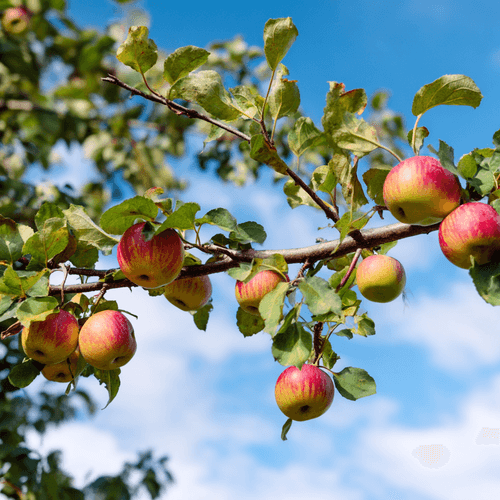Did you know ?
- 1 There are over 7,500 apple varieties grown worldwide.
- 2 Apples float because they are 25% air by volume.
- 3 The average apple tree can produce up to 200 pounds of apples annually.

The apple is a popular and versatile fruit known for its crisp texture and sweet-tart flavor. Rich in fiber and antioxidants, apples come in various colors and sizes, offering a range of tastes from tart to sweet. They are widely consumed fresh, used in cooking, and processed into various products.
Did you know ?
View other Pome fruits
Nutrition
| Calories | 95 kcal |
| Proteins | 0.5g |
| Carbohydrates | 25g |
| of which sugars | 19g |
| Fiber | 4g |
| Fats | 0.3g |
Ripeness
Selection
Storage and ripening
If you bought unripe apples, here's how to speed up the process :
Health
Origin
Apples have been cultivated for thousands of years, with their wild ancestors originating in Central Asia. The domesticated apple (Malus domestica) spread along the Silk Road and was later introduced to other parts of the world by European colonists. Today, apples are grown in temperate climates worldwide and have become one of the most popular fruits globally.
Recipes
Gallery
There is no images yet. Submit one now to contribute to the gallery !
F.A.Q
Warnings
Similar in shape to apples but with a grainier texture and different flavor profile.
Resembles a large, lumpy apple but is much harder and cannot be eaten raw.
Smaller than regular apples and often too tart for fresh eating, typically used for jams or ornamental purposes.